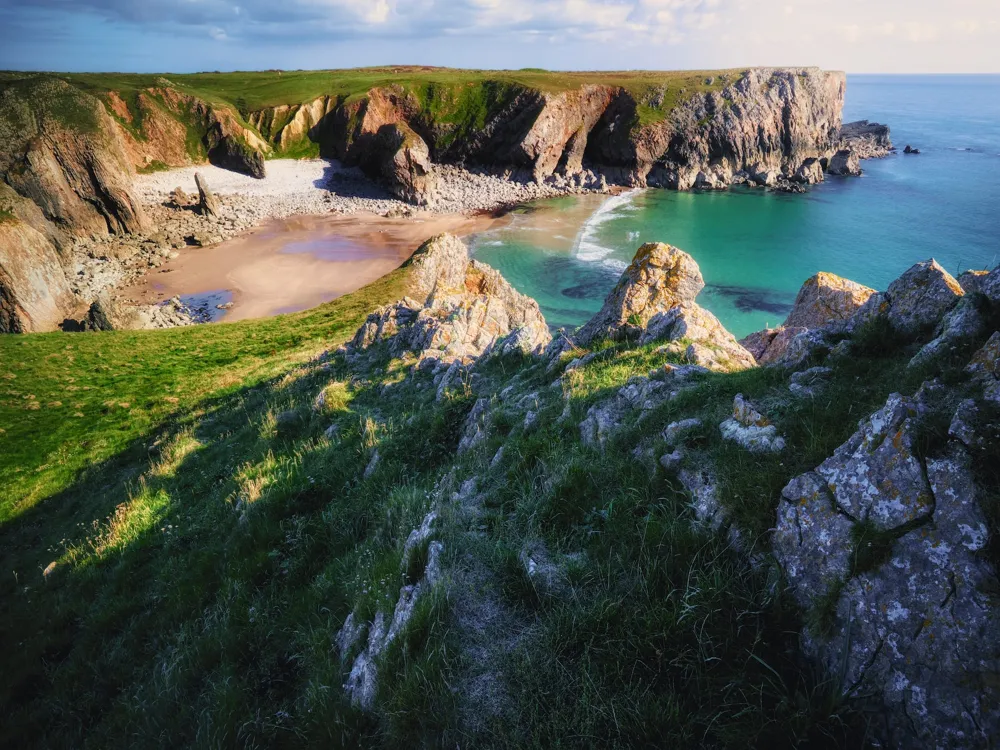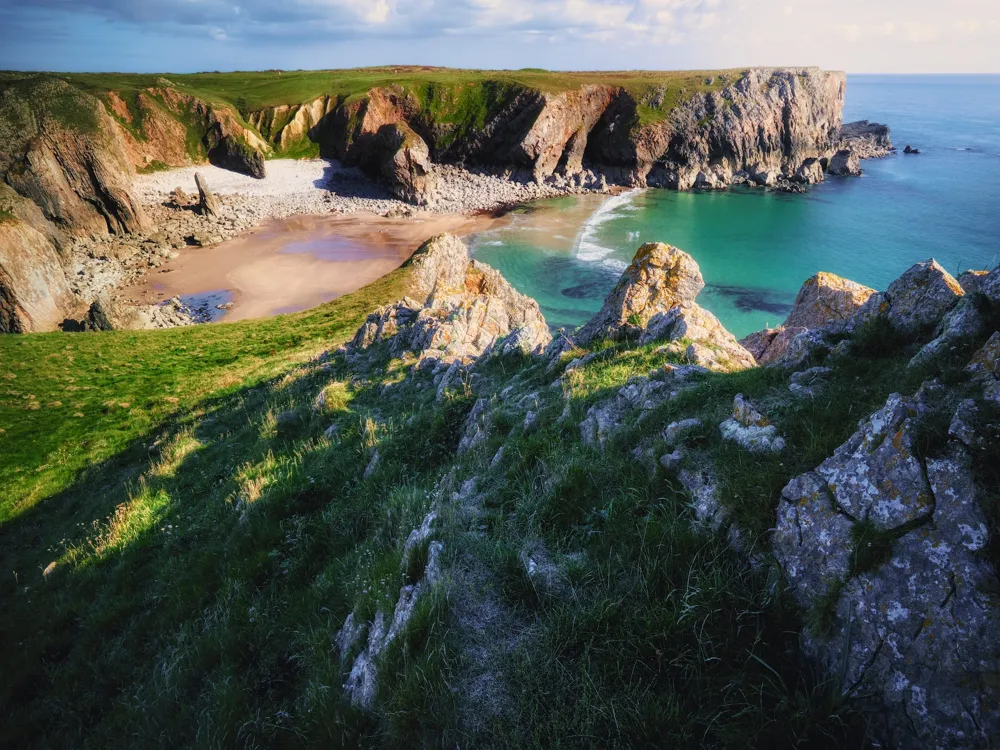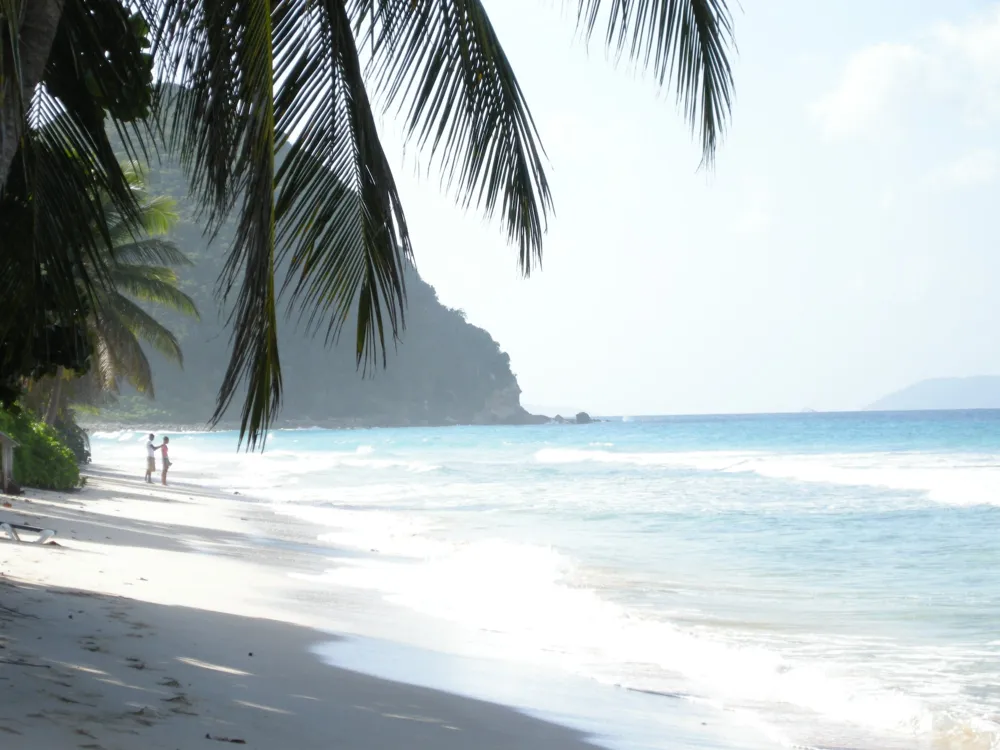Halong Bay, a magnificent UNESCO World Heritage site and one of the most iconic natural marvels of Vietnam, is renowned for its scenic ocean karst topography. Located in the Gulf of Tonkin, the bay features thousands of limestone karsts and isles in various shapes and sizes. This mystical landscape is not only a visual wonder but also a haven for biodiversity, housing various species of flora and fauna. The region's history is as rich and diverse as its landscape, having been inhabited since ancient times, as evidenced by the numerous ancient cultures that have left their mark here.
The bay spans an area of around 1,553 square kilometers and is home to approximately 1,600 limestone islands and islets, creating a spectacular seascape of limestone pillars. Many of these islands are hollow, with enormous caves, while others feature lakes and support floating villages of fishermen. The evolving natural beauty of Halong Bay, defined by its clear waters and towering limestone islands topped with rainforests, is the result of 500 million years of formation, involving different environments and conditions. The core of the bay has an area of 334 square kilometers with a high density of 775 islets.
The biodiversity of Halong Bay is also noteworthy. It includes tropical evergreen, oceanic and sea shore bio-systems. The bay is also home to 14 endemic floral species and about 60 endemic faunal species. Its waters provide habitat for a variety of species including fishes, mollusks, and crustaceans, while its islands are home to numerous bird species, mammals, reptiles, and amphibians.
Halong Bay is not just a natural wonder, but also a place steeped in cultural and historical significance. The bay has been the setting for several important events in Vietnamese history and is associated with many legends and folklore. It's also a hub for cultural activities, traditional fishing practices, and the daily life of the local community which is intrinsically tied to the sea.
The scenic beauty of Halong Bay is not only a source of inspiration for poets and artists but also attracts millions of tourists each year. It offers an ethereal and surreal landscape that seems almost dreamlike, with mist-shrouded peaks rising from the tranquil turquoise waters. A cruise through the bay, weaving through the islands, islets, and limestone karsts, offers an unforgettable experience, revealing the many facets of this natural wonder.
The architecture of Halong Bay is not about human-made structures, but rather the natural architecture crafted by Mother Nature over millions of years. The bay's most striking feature is its myriad of limestone karsts and islands of various shapes and sizes. These towering structures are the result of centuries of erosion and weathering, sculpting them into fascinating forms that capture the imagination.
The limestone in this area has gone through 500 million years of formation in different conditions and environments. The evolution of karst in Halong Bay has taken 20 million years under the impact of the tropical wet climate. The geo-diversity of the environment in the area has created biodiversity, including a tropical evergreen bio-system, oceanic and sea shore bio-system.
Halong Bay's caves are also a significant aspect of its natural architecture. The Sung Sot (Surprise) Cave, Thien Cung Cave, and Dau Go Cave are among the most famous. These caves are filled with stunning stalactites and stalagmites, forming natural sculptures that astound and inspire. The interiors of these caves reveal complex formations, each telling a story of geological history and natural forces at play.
Another unique architectural element of Halong Bay is its floating villages. These villages, like Vung Vieng, Cua Van, and Ba Hang, are remarkable examples of adapting life to live on the water. The houses, built on floating platforms, are interconnected and create a community living harmoniously with the sea. These villages not only add to the cultural richness of Halong Bay but also demonstrate a sustainable way of living in balance with nature.
The natural architecture of Halong Bay extends beneath the water's surface. The coral reefs in the bay are home to a diverse range of marine life, creating underwater landscapes as captivating as the towering karsts above. These underwater ecosystems contribute to the bay’s biodiversity and offer a different perspective on the natural beauty of Halong Bay.
In summary, the architecture of Halong Bay is a testament to the artistry of nature, showcasing a landscape that has been shaped and molded over millennia. It's a place where every island, cave, and waterway tells a story, and every view offers a glimpse into the earth's geological past.
The best time to visit Halong Bay is during the spring (March to May) or fall (September to November). During these periods, the weather is most pleasant with moderate temperatures and clearer skies, offering the best conditions for cruising and sightseeing.
Selecting the right cruise is essential for your Halong Bay experience. Consider factors like the length of the cruise, the size of the boat, onboard facilities, and itineraries. Luxury cruises offer more comfort and better amenities, while budget cruises are more affordable. Reading reviews and comparing options can help you make the best choice.
For a comfortable trip, pack light and smart. Essentials include swimwear, sunblock, insect repellent, comfortable footwear for exploring caves and islands, a camera, and a hat to protect from the sun. Also, consider the season and pack accordingly.
When visiting Halong Bay, it's important to respect the local culture and environment. Avoid littering and disturbing wildlife. Be mindful of local customs and traditions, especially when visiting floating villages or interacting with local communities.
While cruises are a great way to see Halong Bay, consider exploring beyond the boat. Visit Cat Ba Island, take part in water sports, explore caves, or hike in the national parks. Engaging in these activities gives a fuller experience of what Halong Bay has to offer.
Halong Bay is accessible from Hanoi, the capital of Vietnam, and the journey takes about 2-4 hours by road. The most common way to get there is by shuttle bus, private car, or seaplane. Shuttle buses and private cars can be arranged through your hotel or a travel agency. For a unique experience, a seaplane from Hanoi offers stunning aerial views of the bay.
Overview of Halong Bay
Architecture of Halong Bay
Tips When Visiting Halong Bay
Best Time to Visit
Choosing a Cruise
Packing Essentials
Respect Local Culture and Environment
Exploring Beyond the Cruise
How To Reach Halong Bay
Sun World Ha Long Park
Halong Bay
₹ 15,260 onwards
View halong-bay Packages
Halong-bay Travel Packages
View All Packages For Halong-bay
Top Hotel Collections for Halong-bay

Private Pool

Luxury Hotels

5-Star Hotels

Pet Friendly
Top Hotels Near Halong-bay
Other Top Ranking Places In Halong-bay
View All Places To Visit In halong-bay
View halong-bay Packages
Halong-bay Travel Packages
View All Packages For Halong-bay
Top Hotel Collections for Halong-bay

Private Pool

Luxury Hotels

5-Star Hotels

Pet Friendly






















